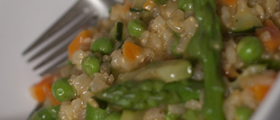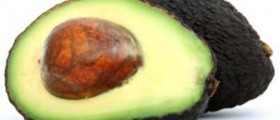
Glycemic Index (GI)
Glycemic index is a numerical scale used to determine how much and how quickly certain foods raise blood glucose level.Glucose is the primary energy for most body cells, transported through the blood, and mainly derived from carbohydrates by food intake.
Food that has a low glycemic index value causes a small increase in blood glucose and food with high GI cause rapid and large increase in blood glucose level.
Knowledge about the values of food GI can help in controlling blood glucose level, which can be a good strategy in preventing heart diseases, increased cholesterol level, insulin resistance, type II diabetes, and obesity. There is a considerable amount of scientific studies that show the beneficial effects of food, considering the values of GI, especially in diabetics.
The presence of glucose in the blood causes the production of insulin - a hormone that helps glucose entering the cells in which it is used as an energy source. When the current glucose needs are satisfied, excess glucose is stored in the liver and muscles for later use. If stocks in the liver and muscles are overfilled and glucose is still present in the blood, insulin store excess glucose as fat.
Foods with a high proportion of carbohydrates are whole grains (wheat, barley, rice), legumes (lentils, beans, peas) and starchy vegetables (potatoes).
Fruit is rich in fructose, and is also one of the foods rich in carbohydrates.
Honey and various sweeteners and sugar added to food during processing are important sources of carbohydrates.
Food fibers are indigestible carbohydrates. Because of this, the fibers do not raise blood glucose level, although they belong to the carbs.
Low GI Diet Plan
Diet plan that includes food of a low or moderate glycemic index value can have a positive impact on the prevention and treatment of chronic diseases and metabolic syndrome.Person is usually feeling tired and lethargic after eating sweets or foods rich in table sugar, which causes a sudden increase in insulin level. This feeling occurs due to excessive production of insulin, which causes a decrease in glucose level below normal value and the occurrence of hypoglycemia and fatigue. If the blood glucose level is constantly and rapidly increasing and decreasing during the day, it is clear that person won’t feel good. Choosing foods that maintain a constant level of glucose in the blood contributes to feeling good and energy increasing.
Tips for Choosing Foods
Foods made of white flour and white sugar should be avoided. Potatoes also have a high GI value.Foods rich in dietary fiber should be preferred. These foods take more time to be digested, causing a lower rise in blood glucose level. Whole unprocessed food, particularly cereals, which contain naturally present amount of dietary fiber, slowly pass through the digestive system, providing longer feeling of fullness. Foods rich in fiber are whole grains, vegetables, legumes, nuts, seeds and fruit. Citrus fruits have a lower glycemic index than most fruits.
Foods high in protein usually have a low GI. Fish, lean meat, dairy products and legumes are excellent foods with low GI.
Fat does not significantly raise blood glucose level but preference should be given to high-quality fats such as linseed oil, olive oil and nuts.
Glycemic response depends on the combination of food being consumed. Complex, varied meals containing complex carbohydrates, proteins, appropriate types of fats and dietary fibers will provide moderate glycemic index. Combining foods with high glycemic index and those with low GI balances organism response.

















Your thoughts on this
Loading...